Every student rotation (3-4 weeks) the Hillside clinic (where Lori is currently serving as the rehab director) takes their students on a day-long outing dubbed “Cultural Day,” where the med/ nursing/ PA/ PT/ pharmacy students get a chance to sample a bit of Southern Belize culture and natural beauty. That’s not to say that most days the students don’t get a heaping helping of “culture” by virtue of being in Southern Belize and learning/practicing medicine in a clinical and rural setting — Cultural Day is unique because the entire day devoted to enjoying a handful of people and places in Toledo District.
Even though we’ve been in Belize for nearly four months, we hadn’t yet had an opportunity to participate since Lori’s workload doesn’t usually allow for a day off every month and I wouldn’t want to go if she wasn’t able to. But December was different and Lori was able to move some things in her schedule around, so off we went.
As discussed in previous posts, Southern Belize is home to a half dozen or so distinct ethnic cultures: Carib-Kreol, Mestizo, Garifuna, Q’eqchi and Mopan Maya, East Indian, Mennonite, Chinese and Euro-American. Today, we got to sample a bit of Q’eqchi and Garifuna culture of Toledo District.
The schedule for the day
1. Presentation on the cultures of Southern Belize at Hillside clinic;
2. Visit Nim Li Punit, a Mayan ruin near Indian Creek (~40 minutes from PG);
3. Have Q’eqchi Mayan food for lunch at Ixchel women’s cooperative in Indian Creek; Learn how to make jipijapa baskets and corn tortillas;
4. Guided tour of Blue Creek Cave near San Antonio;
5. Garifuna dinner, drumming and dancing at Warasa Drum School in Punta Gorda.

The first stop was the Mayan ruins of Nim Li Punit just outside of Indian Creek. Lori and I had been previously and opted not to pay the entrance fee and go through a second time, but if you’re ever in the area, it’s a worthwhile sight to see.
After the ruins, we headed to Ixchel women’s cooperative, where several Q’eqchi women meet on a regular basis to create wares and tortillas to sell. The basic idea behind most women’s cooperatives is to give local women an opportunity to pool their financial resources and knowledge to create products for resale. The hope is that the proceeds from such activities will benefit the families while imparting technical and life skills on participants and fostering an environment of empowerment. I’ve worked with a number of women’s groups through my own work and enjoy observing how each group takes the same general framework and runs with it in their own unique way. There’s something very fascinating seeing the immediately familiar cooperative framework in action in environments that might not be so familiar, such as in Swaziland, Peru, Rwanda, Cambodia, Belize, and so on.


First, we gathered in a large Mayan thatched kitchen to watch how the Q’eqchi make their distinctive woven baskets and other handicrafts from jipijapa leaves (pictured above), while other women from the cooperative began to prepare lunch in the background.

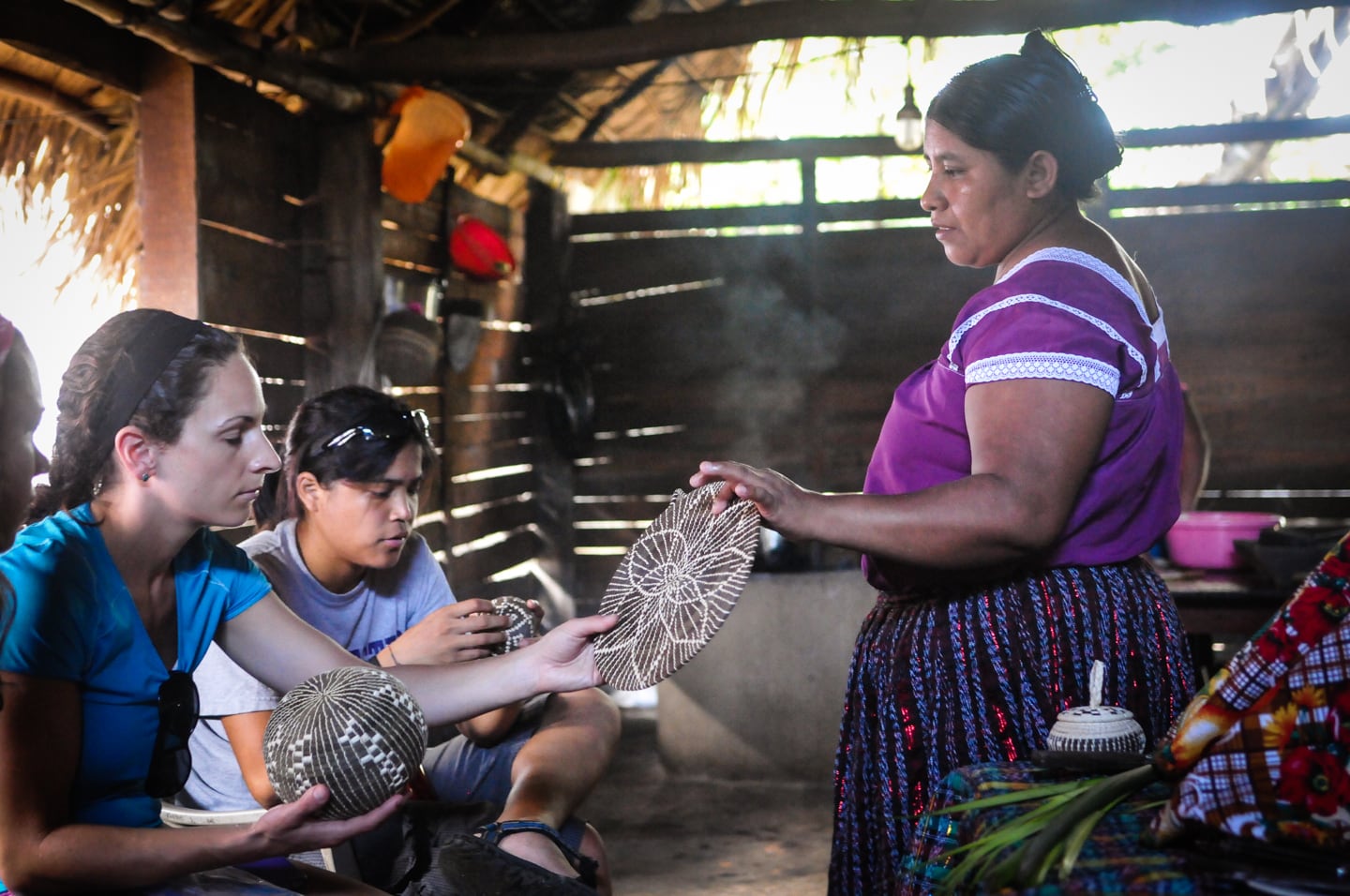

The women also grow cacao for chocolate. Following the basket demonstration, the women’s group member offered a sampling of raw cacao bean.

If you’ve ever wondered where chocolate comes from, this is it.

Next, we moved on to the maize-grinding demonstration. Here (above) a woman grinds maize (the old-fashioned way) for tortilla-making. There are only two ingredients in Q’eqchi tortillas: maize (corn) and water. I’m not sure if it was the type of corn or the elbow grease, but these tortillas were particularly tasty — unusually light and fluffy for corn tortillas, and of course not the least bit greasy since there is no oil involved (they’re cooked over a thick iron slab known as a comal.
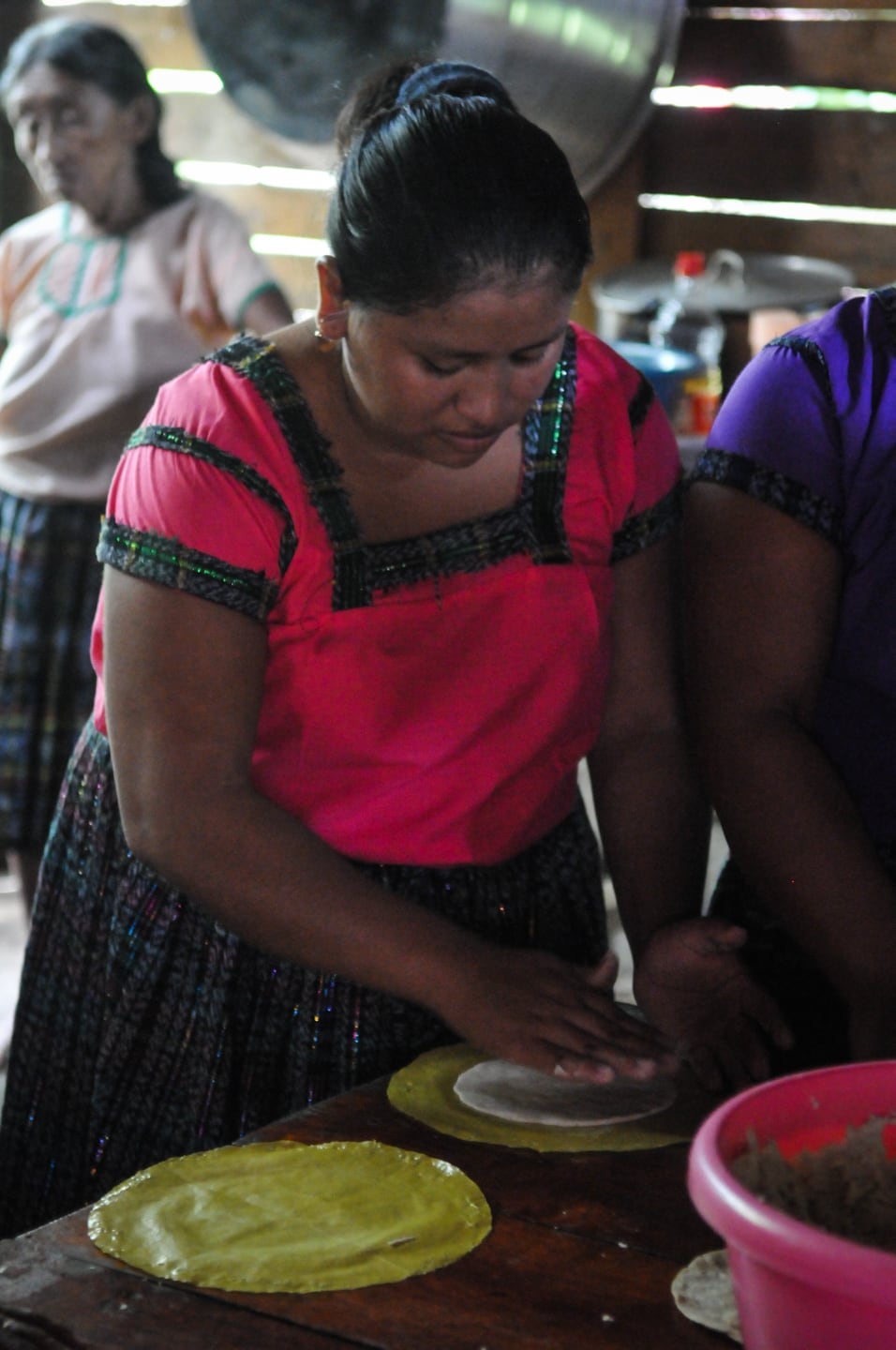
Also something I hadn’t seen before is the use of plastic in flattening the tortillas. In the past, I’ve seen them flattened by either tossing them back and forth between the hands or using a tortilla press.

After a sufficient amount of observation, the students stepped in to try their hand at the various steps of the tortilla-making process.



Lori even joined in on the fun…well, she actually seems to be taking it pretty seriously.

Meanwhile, the other components of our fantastically aromatic lunch are being prepared.


The students then try their hands at rolling out the tortillas, while I try my hand at not drooling on myself over the growing stack of fresh tortillas.

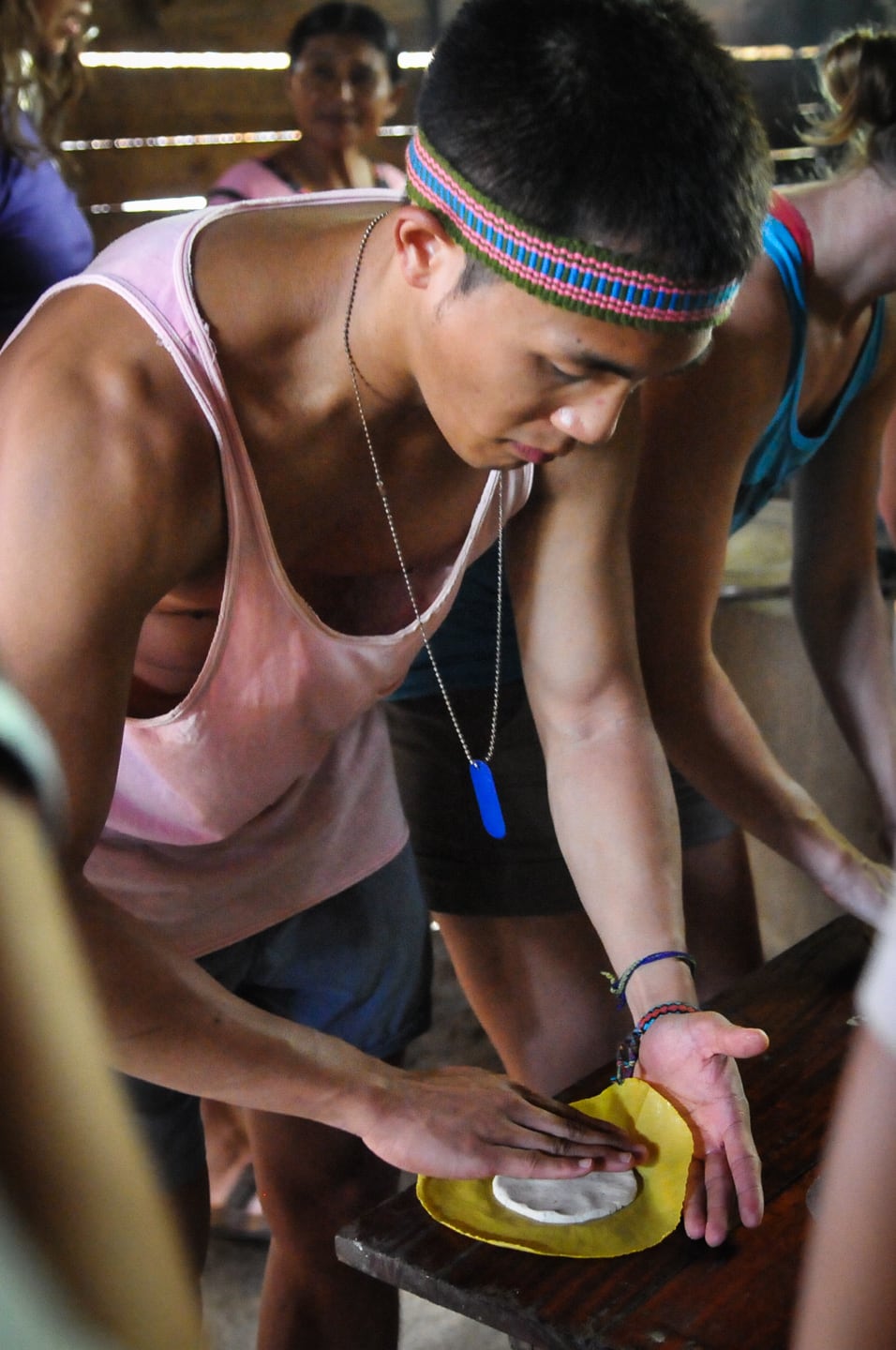


Lunch is served!
After a most delicious meal in Indian Creek with a lovely group of women, we headed on to our next activity: a guided hike to/through Blue Creek cave.
Not too sure what to expect, we found the hike to be more difficult and much more satisfying than Lori and I had anticipated. We’ve been through a number of caves together, but nothing quite like this.
The parking area for the caves is located about 15 minutes from San Antonio. From the parking area, it was about a 20 minute hike to the caves (in pouring rain). At the caves the group changed into bathing suits (I was already wearing mine…and already completely drenched), donned headlamps and life jackets (which were provided) and follow our guide Silvano into the chilly rushing river running out of the cave.
Over the course of the next 1-2 hours, we made our way (by any means necessary–walking, swimming, climbing, floating–deep into the cave to a point at which Silvano deemed too perilous, at which point we put our feet up and let the current take us back to down stream to the mouth of the cave. It was great fun! And a unique experience at that.
On the way back, there’s a swimming hole with a dock and rope swing, which lent itself to washing off the muck of the adventure.
I didn’t bring my camera on this particular outing for obvious reasons, but below is a photo from the interwebs of the mouth of the cave.
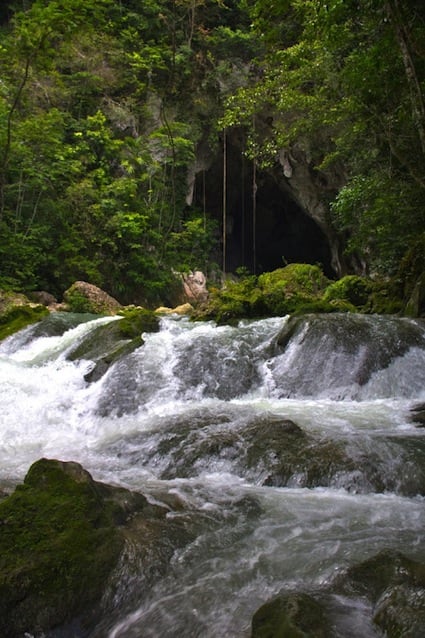
Our fourth and final stop of the day was a new addition to Hillside’s Cultural Day–dinner, drums and dancing at Warasa Drum School in Punta Gorda. Warasa is a Garifuna drum school owned and operated by a Garifuna/Scottish couple and also offer a sampling of Garifuna fare for dinner.

The evening began with a lively display of the various traditional Garifuna beats, ending with the most popular Garifuna beat: Punta Rock (made internationally famous by the late Andy Palacio from Toledo District (Baranco).
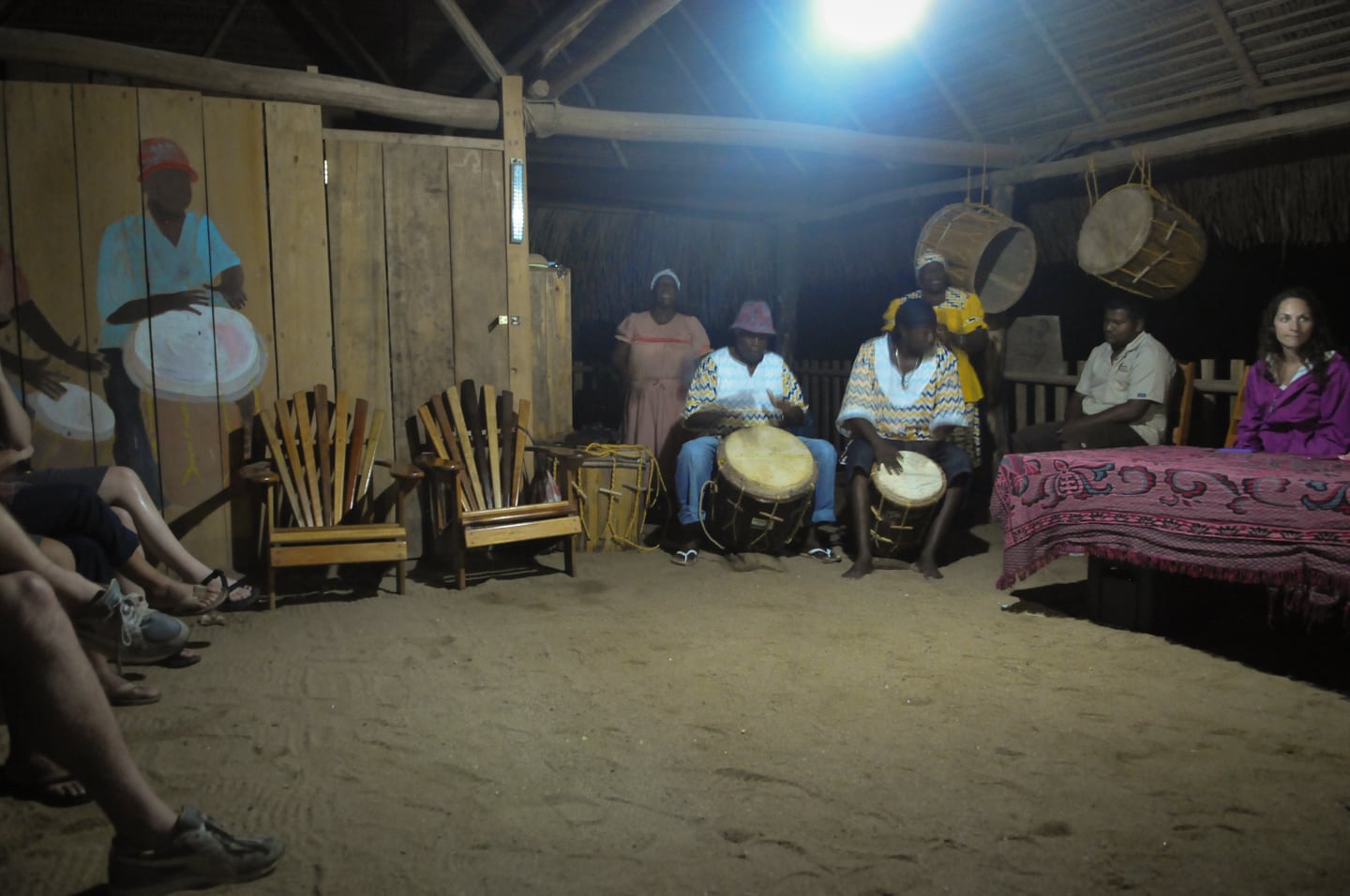

Following the performance, the students were taught some Garifuna dance moves. After the festivities, we sat down to a tasty meal of traditional hudut (fish and coconut stew with mashed plantains).

We didn’t hit up any Kreol or East Indian venues (there are only so many hours in the day, after all) but PG is full of Kreol culture and Eldridge(ville), the community in which Hillside is located, is an East Indian village, so the students don’t generally have to look far.
A long, but action packed day, and great way to spend a Tuesday if I do say so–even if the rainy season refuses to end and the sun refuses to shine. More to come from Southern Belize!




Awesome account! Looks like a fantastic day!!